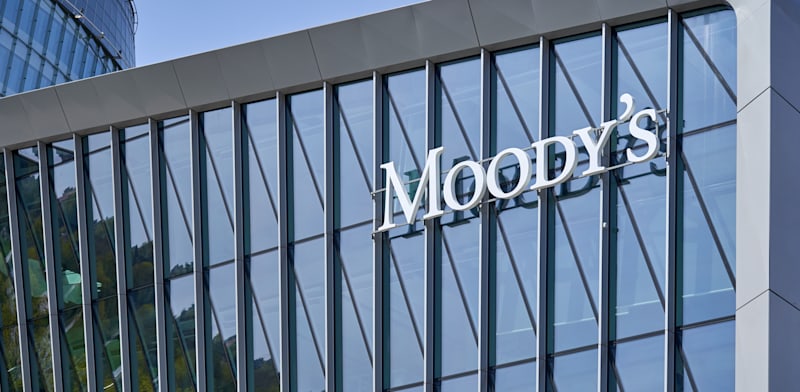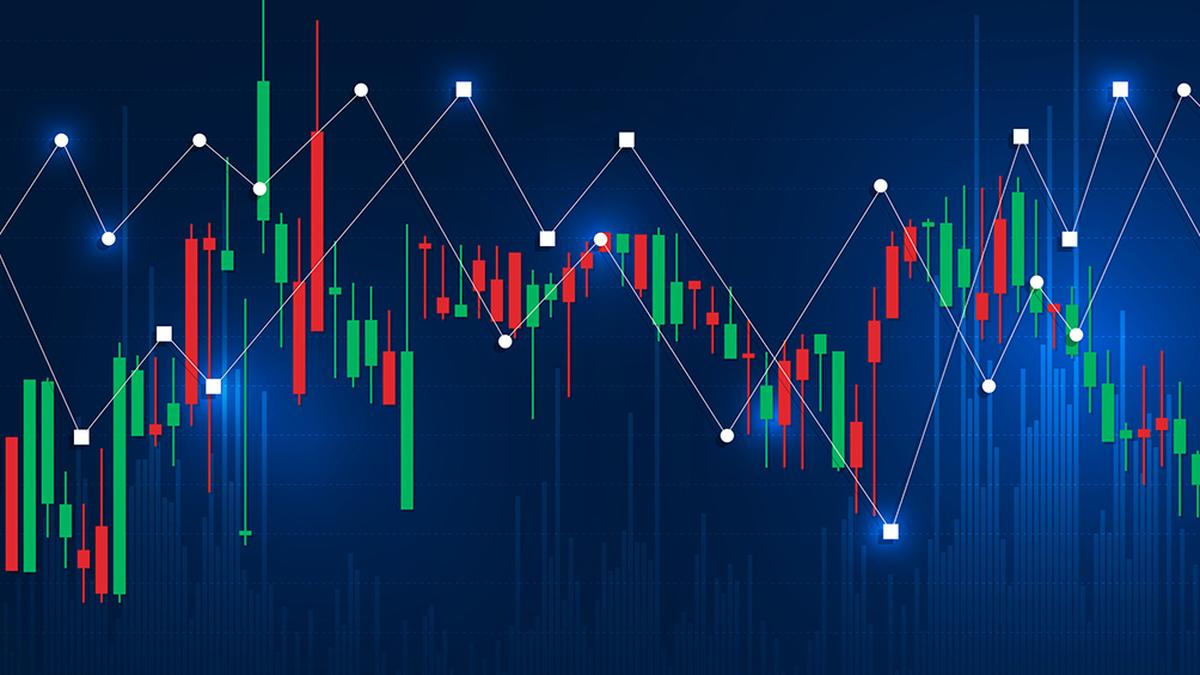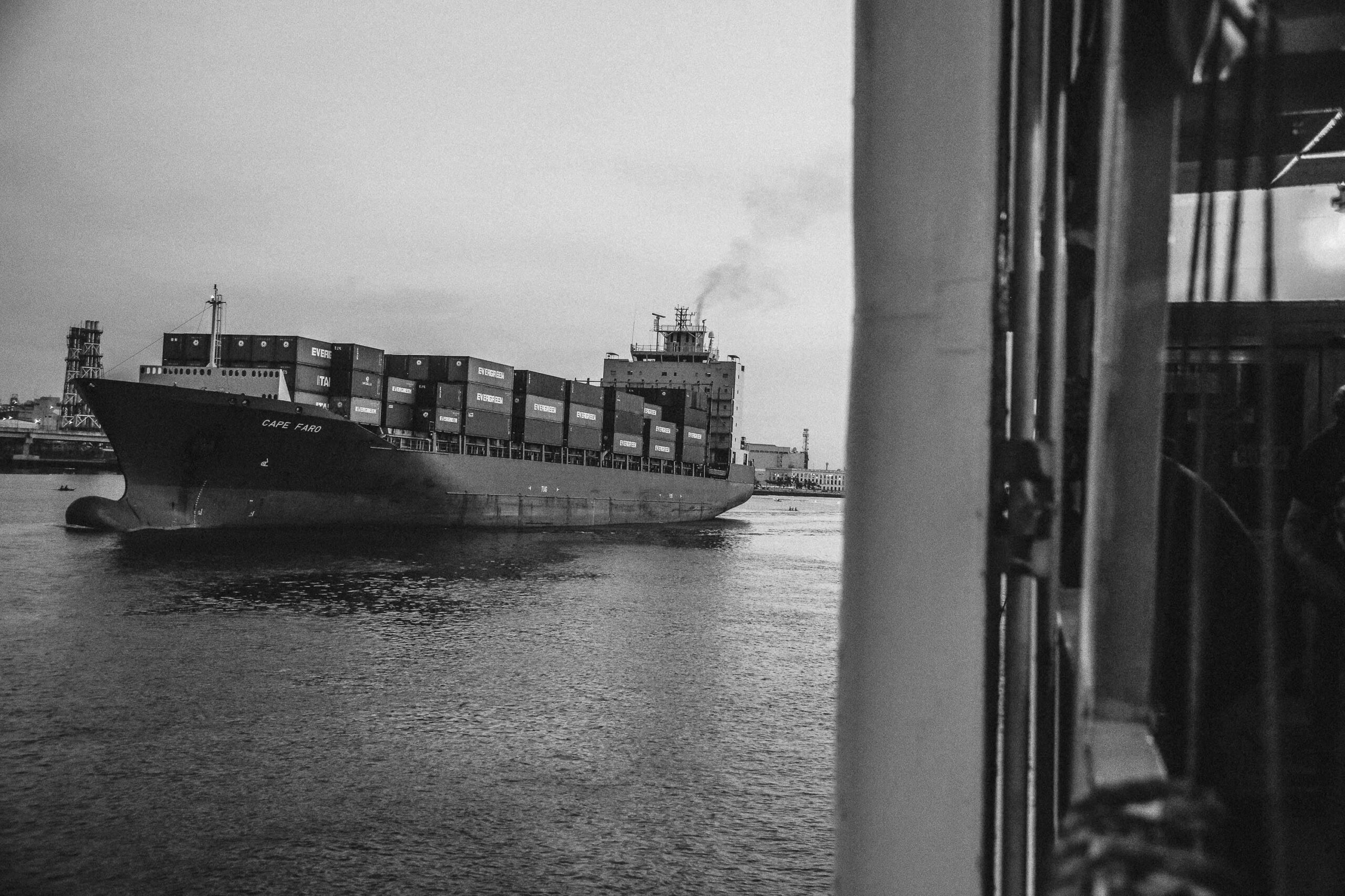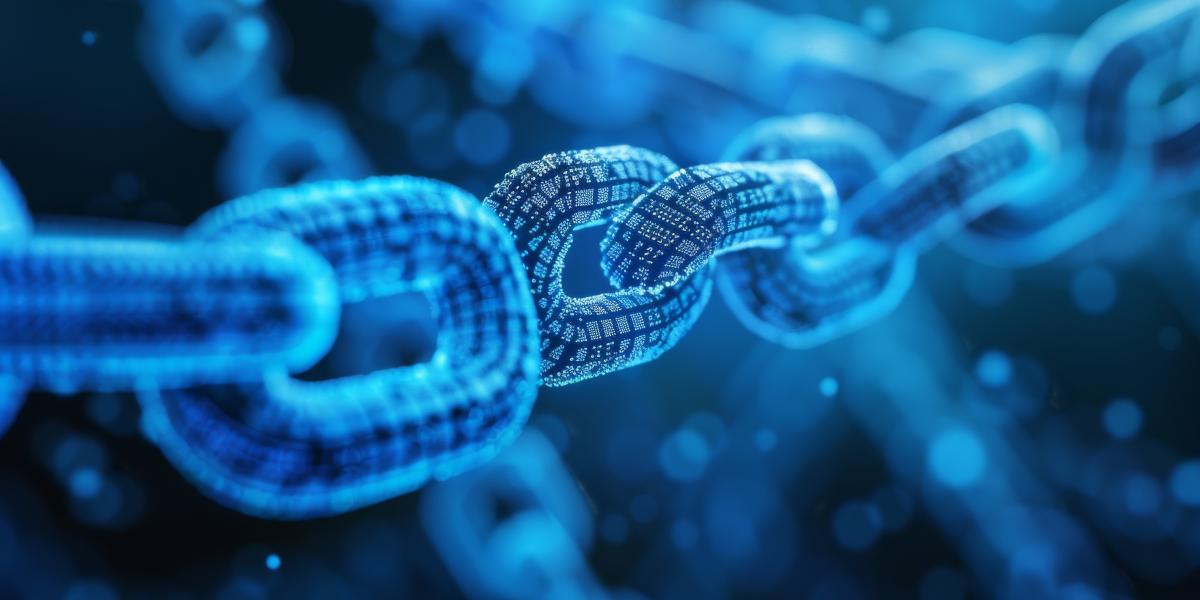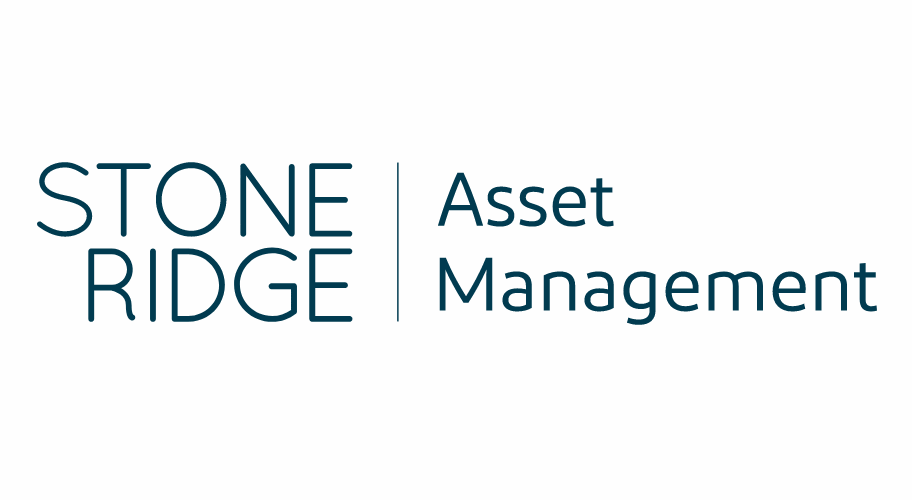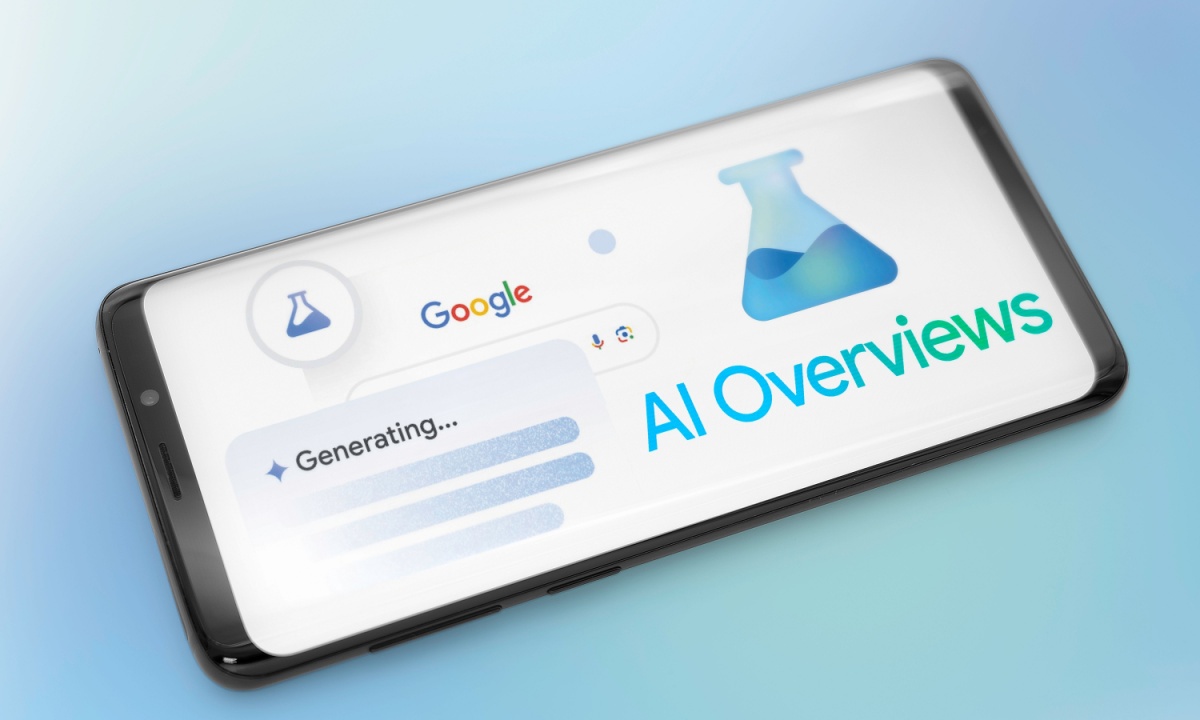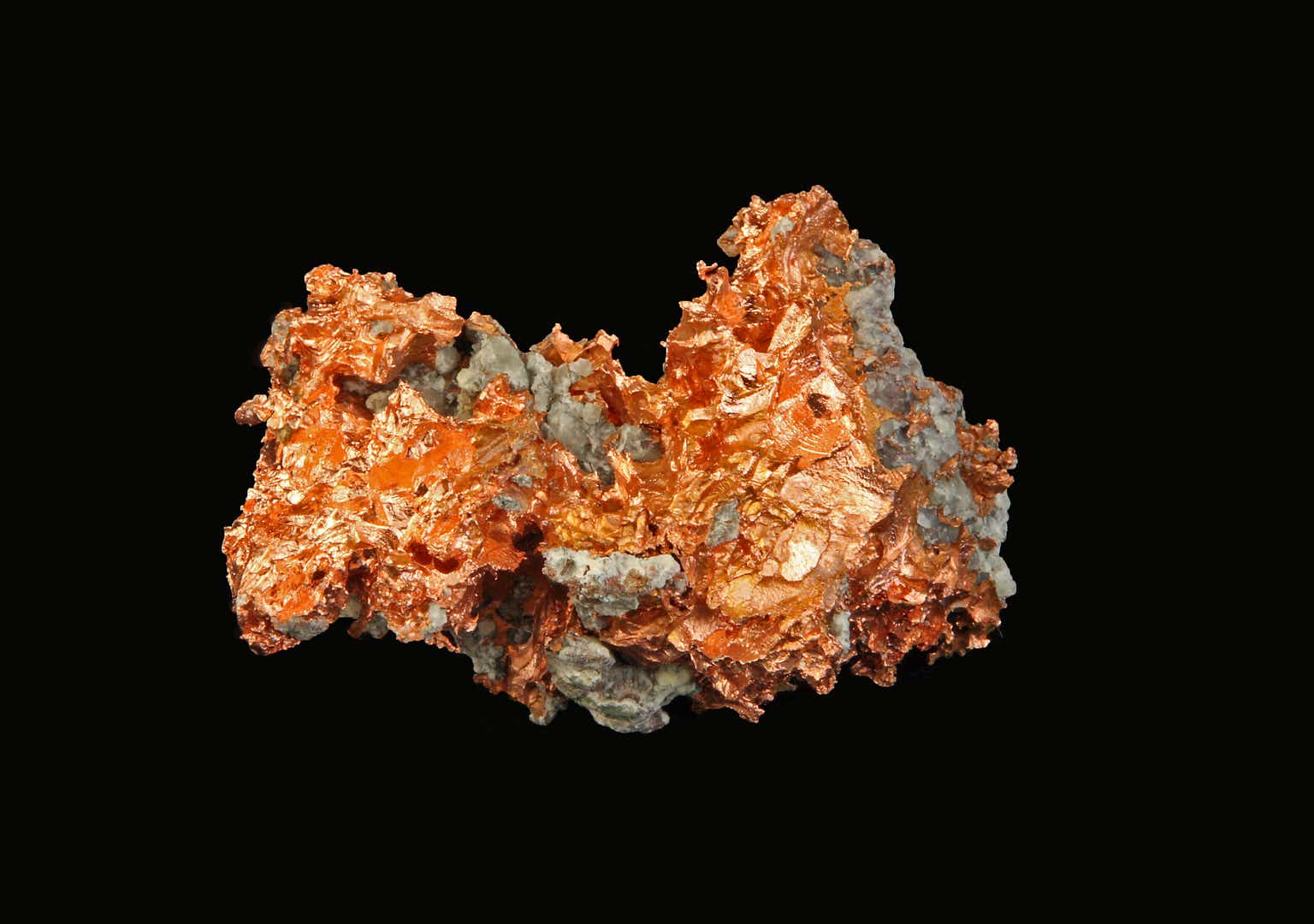ScottOrr
All values are in USD unless noted otherwise.
First Quantum Minerals Ltd. (OTCPK:FQVLF) (TSX:FM:CA) is a mining company that is headquartered in Canada. Although it does have a presence in Mauritania and Turkey, the current mainstays of the company’s operations are in Panama, Zambia and Australia.
Q3-2023 Financial Report
More specifically, Cobre Panamá, Kansanshi (Zambia), Trident (Zambia) and Ravensthorpe (Australia) constitute standalone segments for the company’s financial reporting. The other relatively minor mining operations, along with the metal marketing division, are presented with the corporate activities under the “Corporate & other” segment. The Trident segment includes a nickel mining project (Enterprise) that is under development, one that is 12 kms away from First Quantum’s operational copper mine (Sentinel). Besides the Enterprise project, the company also has a couple others in the development/exploration phase, one being in Argentina and the other in Peru.
First Quantum produces copper and nickel and gets gold, silver and cobalt as by-products of the mining process. Copper brings in close to 90% of the revenues, with the remaining metals contributing the balance.
Q3-2023 Financial Report
This business also has the distinction of being one of the world’s top 10 copper producers (that title maybe in peril, but more on that later).
Dividends
First Quantum pays dividends twice a year, in April and August, and the website explains how the amounts for the two payouts are determined. This policy goes back to 2005.
www.first-quantum.com
This presumably is supplemented by the dividend policy stated in the Q3-2023 Presentation.
Q3-2023 Presentation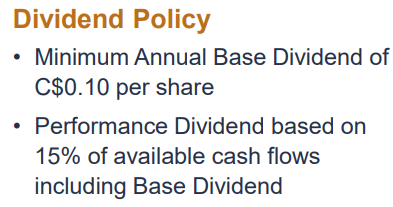
At the end of the day, the month of the dividend payment is the only thing we can be (relatively) confident about (April and August).
Note: the amounts are in CAD
www.first-quantum.com
The payments are not steady, just like the future of this business. We discuss the elephant in the room next.
Cobre Panamá
First Quantum invested more than $10 billion for the mining operations at Cobre Panamá. It forms the biggest chunk of its assets, by far.
Q3-2023 Financial Report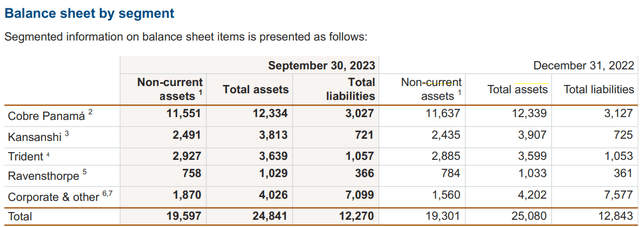
First Quantum, via a subsidiary, entered into a mining concession contract with the government of Panama in 1996. The government even bestowed the contract the status of a national law in early 1997. When time came to renew it in 2016, the process went ahead without a hitch. The new contract gave the company mining rights until 2037, and it remained eligible for a renewal when 2037 came around. The supreme court of the country was not on the same page, however, and questioned the constitutionality of the national law, which by extension were the terms of the mining concession contract from 1996. The company managed to get a stay on the ruling by making filings of their own and continued with the development of the mine. The government continued to support them, giving the company confidence to continue injecting capital for a future income stream. It paid off in September 2019, when Cobre Panamá started commercial production, with the terms of the original mining concession contract still in effect. The supreme court remained unimpressed and upheld the ruling in 2021, which became effective on December 22, 2021, without retrospective repercussions. With that, the days of paying 2% royalties on revenues became history.
First Quantum and the government agreed to a new contract in March of this year. Subsequently, the contract went through a public consultation process, approval by the regulatory authorities, and the cabinet. After amendments were incorporated, it was eventually finalized, signed and sealed on October 20. This new contract was also anointed with the status of a national law. First Quantum owed around $395 million in taxes and royalties to the country for 2022, and the contract also guaranteed a minimum of $375 million in annual royalties to the government for the remaining term of the contract (in comparison, the company paid $61 million for 2021). So all was well? NOT. EVEN. CLOSE. This is what followed as protests erupted over the damage to the surrounding forest.
Oct 24: Police arrest nearly 50 protesters in confrontations over the new contract.
Oct 27: Cortizo says the country will reject all new mining projects after widespread protests against the deal.
Oct 29: Cortizo says Panama will hold a referendum to decide whether to scrap the contract with the Canadian miner.
Oct 30: Panama’s electoral court says currently there are not “conditions” to hold a referendum on the disputed mining contract.
Nov 2: Panama’s lawmakers scratch provisions to cancel the contract with First Quantum from a proposed bill banning new mining concessions in the country.
Nov. 7: Two people taking part in an anti-government protest in Panama are shot dead by an assailant.
Nov. 13: First Quantum says reduced ore processing at mine as protesters block access to ports.
Nov. 16: The company and workers at the mine reach an agreement guaranteeing salaries as protests continue.
Nov. 24: Panama’s top court starts deliberations to rule on several constitutional challenges to the contract.
Nov. 27: The company says it hopes to avoid arbitration with Panama’s government by resolving disagreements during a 90-day period for talks.
Nov. 28: Panama Supreme Court rules First Quantum’s contract to operate the copper mine as “unconstitutional”. Cortizo government to proceed with the shutdown of the mine. First Quantum says it is suspending commercial production at the mine amid protests.
Nov. 29: First Quantum announces the suspension of contracts of 7,000 employees at its Panama mine due to what it described as force majeure.
Nov. 30: Panama’s trade minister Federico Alfaro resigns days after the Supreme Court ruling. First Quantum CEO Tristan Pascall arrives in Panama, in a first visit to the country since protests began.
Dec. 1: First Quantum suspends its 2023 production outlook for Panama mine and says it initiated international arbitration over the contract with Panama’s government on Nov. 29.
Source: Reuters
This mine contributes around 5% to Panama’s GDP. In light of recent events, Hernan Arboleda, the director of public policies at the economy and finance ministry, donned the hat of Captain Obvious while revising the growth projection.
Gross domestic product (GDP) growth might be 1-2% next year, down from a previous estimate of 5%, Hernan Arboleda, director of public policies at the economy and finance ministry, said in an interview on Friday.
Source: Reuters
Hopefully 2024 will bring a final resolution to this matter, and the Government, Supreme Court and the general public figure out a way to get on the same page.
Debt
As we can see below, most of the borrowings of this company are in the form of senior notes.
Q3-2023 Financial Report
First Quantum redeemed the notes maturing in 2024, in the first quarter of this year. Additionally, $300 million of the 2025 notes were redeemed in Q2 at 100% of the par value, plus accrued and unpaid interest to the redemption date of May 31. The 2031 notes are a new entrant to this group and are redeemable by the company anytime after June 1, 2026. The call prices vary based on when First Quantum makes the “call”.
The Company may redeem some or all of the notes at any time on or after June 1, 2026, at redemption prices ranging from 104.313% in the first year to 100.00% from June 1 2028, plus accrued interest. In addition, until June 1, 2026, the Company may redeem up to 35% of the principal amount of notes, in an amount not greater than the net proceeds of certain equity offerings, at a redemption price of 108.625% plus accrued interest.
Source: Q3-2023 Financial Report
Maybe the company had an idea of the Panama woes to come later in the year. That is why they may have chosen to redeem the notes that were close to maturity and securing new financing at relatively reasonable rates before the debt markets closed on them.
In terms of liquidity, First Quantum has around $1.6 billion available under its credit and trading facilities.
Verdict
The markets have been watching the drama unfold and reacted swiftly as things came to a head in Q4.
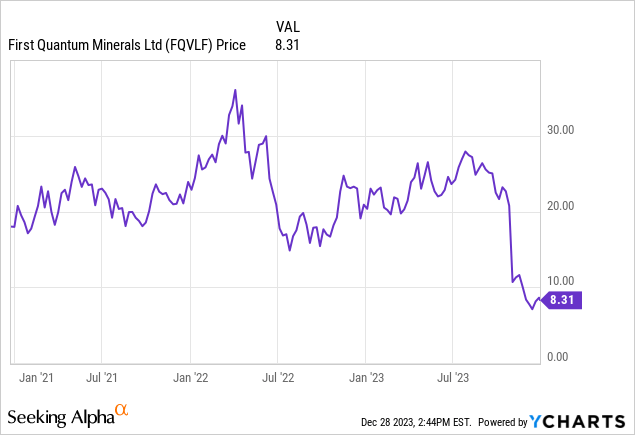
The credit agencies, Fitch and S&P Global, are also watching this business closely.
www.first-quantum.com/fixed income investors
S&P Global laid out what would trigger a downgrade for First Quantum in the December 7 report.
The CreditWatch placement indicates that we may downgrade FQM in the coming months if we consider that operational disruptions at Cobre Panama turn out to be prolonged and lead to a substantial increase in leverage and weakening liquidity. We may also regard FQM’s business as less resilient if the Panamanian contribution to EBITDA falls meaningfully below 50%, or if the political risk associated with operating the Cobre Panama mine rises.
Source: www.first-quantum.com/fixed income investors
We are getting close to the point where the market is writing off the Cobre Panamá mine. But most analysts expect some resolution at some point, perhaps as late as 2025, and we agree as well. The impact to Panama’s GDP is likely going to be scathing, and that should get the setup going. Our own ESG views aside, we think nine months of pain to Panama will culminate with a bouncing baby named “Negotiation”. The stock, while extremely risky, has a very solid risk-reward investor. Now, obviously this is not a conservative income stock, but the upside can be material. There are a couple of ways investors could play this. The first would be to take a small position here post the tax-loss selling. You got $10.85 CAD on the downside and likely $20.85 on the potential upside. The second would be to buy the January 2026 calls for $10.00 CAD Strike. These were running at $4.50 CAD, with the stock at $10.85 CAD. The bulk of the value of the option is non-intrinsic. If we see a resolution by then, we would expect the stock to at least reach $30.00 CAD and the options would be worth $20.00 CAD be then. So that is a good return profile if you are right and limit losses if you are wrong.
A third alternative measure would be dive into the bonds.
The March 1, 2026 bonds, for example, have an 11.6% yield to maturity.
Interactive Brokers
They are very likely to be paid off if there is even some semblance of a resolution by then. One alternative view of looking at it is the value of the non-Cobre Panamá mine assets. These assets work out to about half of the total assets and generally work to about 50% of the NAV calculated by analysts. So while the bonds would appreciate a rapid resolution on Cobre Panamá, they have some backing beyond that. We are considering some trades here, but have not made a move yet.
Editor’s Note: This article discusses one or more securities that do not trade on a major U.S. exchange. Please be aware of the risks associated with these stocks.







